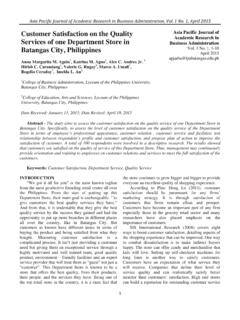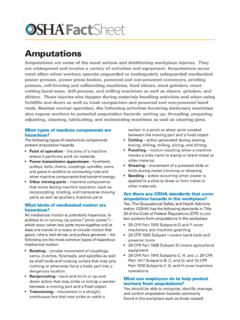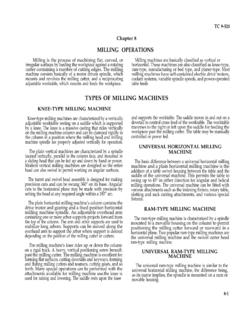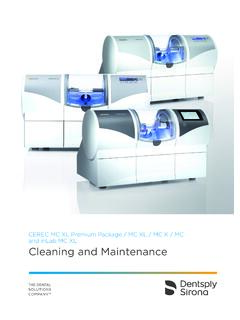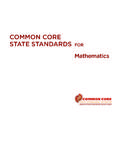Transcription of Design and Development of Rice Milling and Grinding Machine
1 EPH - International Journal of Science and Engineering ISSN: 2454 - 2016. Design and Development of rice Milling and Grinding Machine Brian Kristoffer M. Caringal, Zyrom S. Dela Rosa, Kyle Vergel R. Maan, Nestor C. Camello Mechanical Engineering Department, Lyceum of the Philippines University, Batangas City, Philippines ABSTRACT. The main objective of the study is to Design and construct a prototype of a rice huller with rice grinder. Experimental research approach is used in this study. It is an attempt by the researcher to maintain control over all factors that may affect the result of an experiment. The researchers had successfully fabricated a prototype of a rice huller than can efficiently husk and bran of the rice using the principle of friction resulting from the rotating motion of the steel roll.
2 A vacuum fan was also installed to suck the remaining light husk at the exhaust of the rice huller. The resulting output from the rice huller with vacuum fan had a husk to rice ratio of less than one cup of husk per 30 cups of rice . Keywords: rice Milling , Grinding Machine INTRODUCTION. rice (Oryza sativa) or locally known as palay, bigas, kanin is common to the Filipinos, that is rarely every missing on the table be it breakfast, lunch or dinner. As a cereal grain, it is the most widely consumed staple food for a large part of the world's human population, especially in Asia. It is the agricultural commodity with the third-highest worldwide production, after sugarcane and maize, according to data of Food and Agriculture Organization of the United Nations (2014).
3 Milling is the process wherein the rice grain is transformed into a form suitable for human consumption, therefore, has to be done with utmost care to prevent breakage of the kernel and improve the recovery. Brown rice is milled further to create more visual appealing white rice . After harvesting and drying, the paddy is subjected to the primary Milling operation which includes de-husking as well as the removal of bran layers (polishing) before it is consumed (Dhankhar, 2014). Throughout history, there have been numerous techniques to hull rice . Traditionally, it would be pounded using some form of mortar and pestle. An early simple Machine to do this is a rice pounder.
4 Later even more efficient machinery was developed to hull and polish rice . Nowadays, a rice huller or rice husker is an agricultural Machine made to automate the process of removing the chaff (the outer husks) of grains of rice . Milling is the process wherein the rice grain is transformed into a form suitable for human consumption, therefore, has to be done with utmost care to prevent breakage of the kernel and improve the recovery. Brown rice is milled further to create more visually appealing white rice . After harvesting and drying, the paddy is subjected to the primary Milling operation which includes de-husking as well as the removal of bran layers (polishing) before it is consumed (Dhankhar, 2014).
5 The purpose of a rice Milling system is to remove the husk and the bran layers from paddy rice to produce whole white rice kernels that are sufficiently milled, free of impurities and contain a minimum number of broken kernels (International rice Research Institute). As mentioned by Tangpinijkul (2010), a rice Milling system can be a simple one or two step process, or a multistage process. In a one-step Milling process, husk and bran removal are done in one pass and milled or white rice is produced directly out of paddy. In a two-step process, removing husk and removing bran are done separately, and brown rice is produced as an intermediate product. The single pass rice mill is an adaptation of the "Engleberg" coffee huller.
6 This type of mill is still very popular in many of the poorer rice -growing countries and is widely used for custom Milling of household rice . This mill is a steel friction type mill and uses very high pressure to remove the hull and Volume-2 | Issue-8 | August,2016 | Paper-2 6. EPH - International Journal of Science and Engineering ISSN: 2454 - 2016. polish the grain. This results in many broken kernels, a low white rice recovery of 50-55% and head rice yields of less than 30% of the total milled rice (IRRI, 2014). The steel husker is in fact more than a husker since it also does the polishing. It is an adaptation of the "Engleberg" coffee huller, modified for Milling rice .
7 Paddy rice is fed into the Machine and passes between a revolving steel shaft and a cylindrical shaped mesh screen. These machines are normally powered by a 1 to 5 hp engine and are very simple to operate (Dhankhar, 2014). It combines the dehusking and polishing process into one operation. Paddy is fed into the hopper and, because of the rotational direction of the flutes on the revolving cylinder, is forced to move around the cylinder and toward the outlet. Friction between the grains and the steel parts of the huller (particularly the perforated sheet) causes the husk and bran to be scraped off. In the process, the husk and bran are ground into small pieces and most are pushed through the perforated screen (Tangpinijkul, 2010).
8 Major beneficiaries of the introduction of new technology have been the consumers who benefit from lower rice prices. Those for whom rice represents a major portion of the diet, that is to say the poorest families, clearly benefited the most. National governments also recognized a major political advantage in maintaining low and stable rice prices and were quick to promote and support the adoption of the new technology (Barker & Herdt, 1985). The core of the rice huller is the steel roller which is a steel friction type mill and uses very high pressure to remove the hull and polish the grain. It combines the de-husking and polishing process into one operation. Paddy is fed into the hopper and, because of the rotational direction of the flutes on the revolving cylinder, is forced to move around the cylinder and toward the outlet.
9 Friction between the grains and the steel parts of the huller (particularly the perforated sheet) causes the husk and bran to be scraped off. In the process, the husk and bran are ground into small pieces and most are pushed through the perforated screen and then is fed into a rice grinder. This study was made to further improve the old Design of rice huller which was more economical since the maintenance costs are less. OBJECTIVES. The main objective of the study is to Design and construct a prototype of a rice huller with rice grinder. Specifically, the study aimed: (1) to remove husk or bran on paddy with an output husking ratio of 30 cups of rice per 1 cup husk and (2) to produce fine grind rice from the husked rice .
10 MATERIALS AND METHODS. Research Design Experimental research approach is used in this study. It is an attempt by the researcher to maintain control over all factors that may affect the result of an experiment. In doing this, the researcher attempts to determine or predict what may occur. The steps involved in conducting an experimental study are 1.) identifying and defining the problem 2.) Formulating hypotheses and deducing their consequences 3.) Constructing an experimental Design that represents all the elements, conditions, and relations of the consequences. 4.) Conducting the experiment Description of the rice Huller and Grinder Figure 1 shows the final Design of the rice Huller and Grinder.



